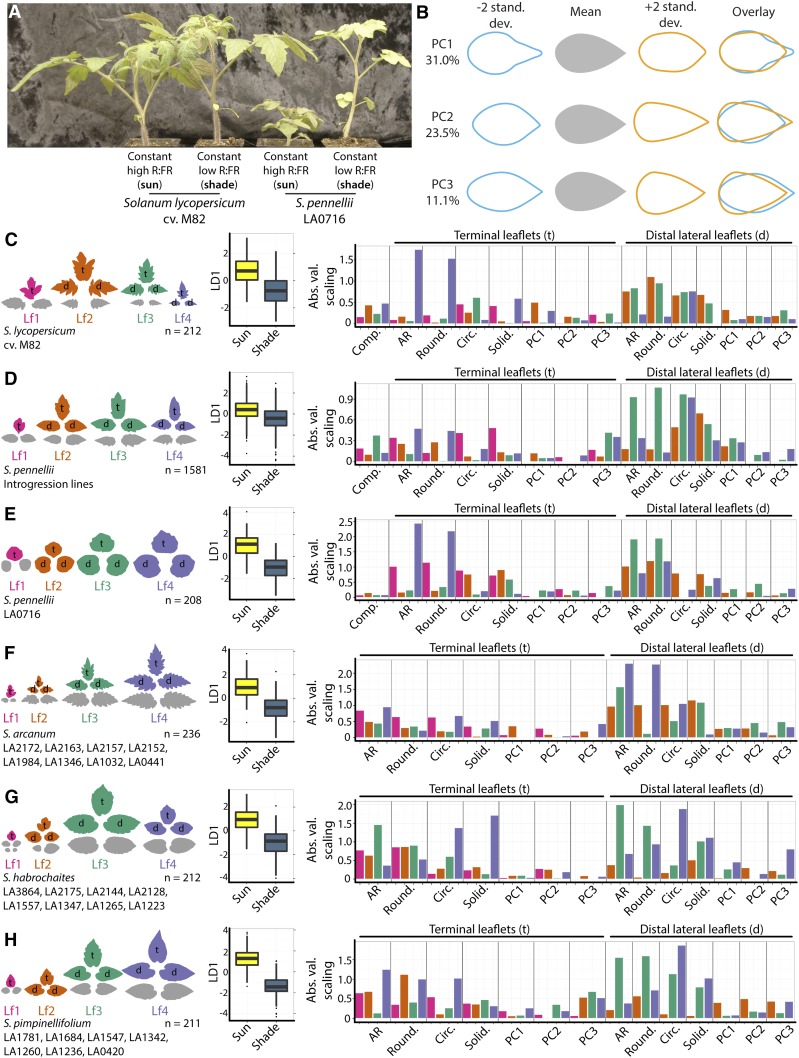Figure 1.
The morphology of shade-avoiding leaves in domesticated tomato and wild relatives. A, S. lycopersicum ‘M82’ (domesticated tomato) and S. pennellii LA0716 grown under high (simulated sun) and low (simulated foliar shade) R:FR conditions. S. pennellii has an exaggerated shade-avoidance response compared with domesticated tomato, characterized by increased internode and petiole lengths. B, Eigenleaves representing theoretical leaf shapes found ±2 sd along each PC. The percentage variance explained by each PC is indicated. PC space and other morphometric parameters were calculated from previously published data on wild relatives of tomato (Chitwood et al., 2012a, 2012b) and field-grown (Chitwood et al., 2013) and chamber-grown (Chitwood et al., 2014) S. pennellii ILs and parents. Eigenleaves were reproduced here from Chitwood et al. (2014) for meta-analysis purposes. C to H, Separate LDAs by light treatment performed for leaflets across the leaf series for S. lycopersicum ‘M82’ (C), S. pennellii ILs (D), S. pennellii LA0716 (E), S. arcanum (F), S. habrochaites (G), and S. pimpinellifolium (H) accessions. Leaflets used in the analyses are indicated by color (magenta, leaf 1; orange, leaf 2; teal, leaf 3; and lavender, leaf 4) and letters (t, terminal; and d, distal lateral). Box plots show resulting LD1 values for each analysis by light treatment (yellow, simulated sun; and dark blue, simulated foliar shade). Bar plots show the absolute values of scalings resulting from LDAs, which indicate the relative contributions of traits to the discrimination of leaflets by light treatment. AR, Aspect ratio.

